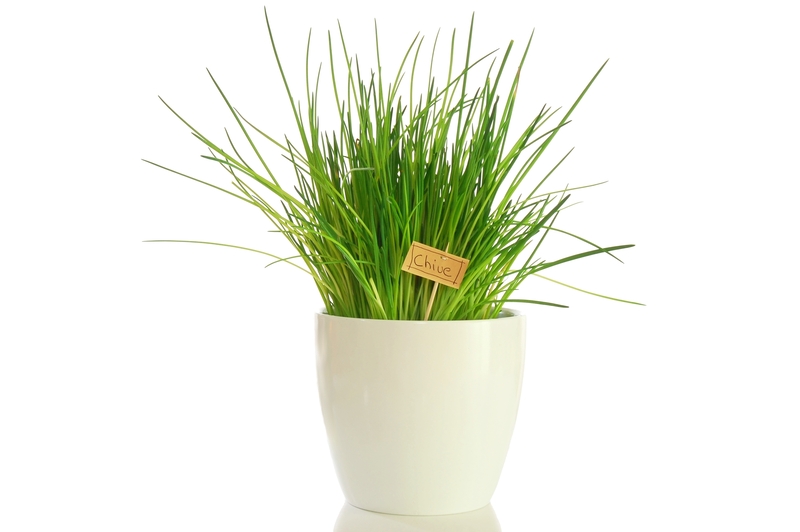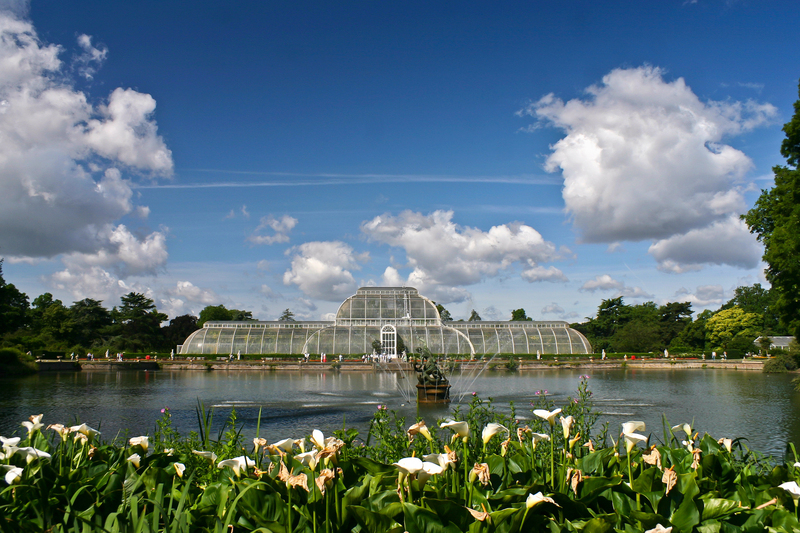Eco-Friendly Landscaping Ideas to Increase Garden Seclusion
Do you dream of a private, tranquil outdoor haven that not only shields you from prying eyes but also supports sustainability? Eco-friendly landscaping offers the perfect blend of privacy, natural beauty, and positive environmental impact. With climate change and urbanization shaping the way we design our homes, creating a secluded garden retreat using sustainable practices is both rewarding and responsible.
In this comprehensive guide, discover innovative eco-friendly landscaping ideas to increase garden seclusion, ranging from living walls to native hedgerows. Whether your outdoor space is large or small, these techniques will transform your yard into an inspiring, private oasis that's gentle on the planet.

Why Choose Eco-Friendly Landscaping for Privacy?
Traditional privacy solutions--like concrete fences or plastic screens--might provide quick results, but usually at a cost: high embodied energy, use of chemicals, and disruption to local biodiversity. Sustainable landscaping for privacy uses natural processes and materials, helping you create privacy barriers that:
- Preserve local ecosystems
- Encourage pollinators and wildlife
- Reduce your carbon footprint
- Add aesthetic and ecological value to your property
- May even increase your property value
Let's explore the best green landscaping ideas for seclusion and how you can adapt them to your needs.
Top Eco-Friendly Landscaping Ideas to Increase Garden Seclusion
1. Create Living Walls and Vertical Gardens for Privacy
A living wall or vertical garden is an innovative way to enhance privacy, especially in small spaces. These plant-covered structures act as natural screens, absorbing noise and filtering air as they shield your property.
- Use Native Vines and Climbers: Try plants like honeysuckle, Virginia creeper, clematis, or native jasmine. They rapidly cover trellises, fences, or wire frames, requiring minimal maintenance.
- Modular Green Walls: Install pre-planted modular panels for an instant privacy boost. Choose drought-tolerant succulents, ferns, mosses, or edible herbs.
- Upcycled Planters: Repurpose pallets or old gutters as vertical planters. Not only are they cost-effective and creative, but they also support sustainability.
Bonus eco benefit: Living walls insulate your home, helping regulate indoor temperatures and reducing energy use.
2. Plant Native Hedges for Natural Screening
One of the most effective eco-friendly privacy landscaping ideas is planting native hedgerows. Unlike fence panels, hedges are living barriers that grow thicker and more effective over time.
- Choose Native Shrubs: Native plants (like holly, hawthorn, elderberry, serviceberry, or wax myrtle) require less water, resist local pests, and support pollinators.
- Mix Species for Biodiversity: A mixed hedge provides year-round privacy, plus food and shelter for wildlife.
- Layering Technique: Layer tall shrubs at the back, with shorter, bushier plants at the front for dense coverage.
Tip: Allow hedges to grow slightly untrimmed for better wildlife habitat and increased seclusion.
3. Use Trees Strategically for Height and Coverage
Planting trees is a long-term green landscaping solution for seclusion. The right species add instant value, shade, and vertical privacy, while benefiting the climate.
- Choose Fast-Growing Native Trees: Red maple, eastern redbud, river birch, poplar, and dogwood are excellent choices for many regions.
- Evergreens for Year-Round Screening: Pines, cedars, and hollies maintain foliage through winter for continuous privacy.
- Stagger Planting: Plant trees in staggered rows or clusters for layered, natural-looking screening without a wall effect.
Eco advantage: Trees sequester carbon, reduce air pollution, and contribute cooling shade to combat the urban heat island effect.
4. Design Wildlife-Friendly Buffers
By planting buffers rich in native grasses, wildflowers, and shrubs, you can create a secluded border that is as valuable to wildlife as it is to your privacy needs.
- Pollinator Borders: Use a mix of flowering natives such as coneflower, goldenrod, milkweed, and lavender to attract bees and butterflies while creating a flowering privacy screen.
- Grassy Screens: Tall ornamental grasses like switchgrass, feather reed grass, or little bluestem form fast-growing, wind-tolerant privacy strips.
- Edible Hedgerows: Incorporate fruiting shrubs like currant, blueberry, and elderberry for privacy, beauty, and bounty.
Note: Wildlife-friendly plantings require less chemical intervention and maintenance in the long run.
5. Build Eco-Conscious Fences and Screens
If you need an immediate solution or have HOA fencing requirements, consider eco-friendly materials and designs:
- Living Fences: Wattle fences (woven from willow or hazel), bamboo screens, or espaliered fruit trees offer privacy and sustainable production.
- Recycled Materials: Salvaged wood slats, repurposed doors, or panels can create rustic, unique privacy screens with minimal environmental impact.
- Green Roofs on Walls: Top brick or wooden walls with sedum mats or mosses for style and stormwater absorption.
Pro tip: Combine fences with climbing plants for maximum eco-seclusion.
6. Install a Rain Garden for Beauty and Seclusion
A rain garden--a depression planted with water-loving natives--can double as a privacy buffer and natural stormwater management system.
- Dense Planting: Fill the rain garden with lush, moisture-loving perennials and grasses that grow tall and thick.
- Strategic Placement: Use rain gardens along property lines or near patios to intercept views while filtering runoff.
- Support Biodiversity: Include a diverse mix for maximum wildlife and pollinator benefit.
7. Sculpt Mounds and Berms with Native Groundcovers
Earth sculpting adds an extra layer of privacy--literally. By raising sections of earth, you can physically and visually separate your garden from neighbors or the street.
- Mound Creation: Use excavated soil from elsewhere in your garden, or add organic material over time.
- Planting for Stability: Cover mounds with deep-rooted native grasses or low shrubs to prevent erosion and maximize coverage.
- Seasonal Color: Use groundcovers like creeping phlox, sedum, or ajuga for year-round interest.
Natural privacy + eco-benefits make this a winning strategy for larger yards or sloped properties!
Design Tips for Eco-Friendly Privacy Landscaping
Plan Before You Plant
- Assess Your Space: Identify sightlines, sun exposure, soil conditions, and wind direction.
- Prioritize Native Plants: Opt for species suited to your region for lower resource needs and higher wildlife value.
- Mix Heights and Textures: Combine trees, shrubs, perennials, and grasses for dense coverage and layered beauty.
Sustainable Maintenance Practices
- Mulch Wisely: Use shredded leaves or wood chips to conserve moisture, suppress weeds, and improve soil health.
- Water Responsibly: Install drip irrigation or rain barrels to minimize water use.
- Avoid Chemicals: Fight pests and disease with organic mulch, beneficial insects, or proper plant selection.
- Let Nature Lead: Allow some leaf litter and seed heads for wildlife habitat and a naturalistic look.
Combine Functional and Aesthetic Elements
- Pathways with a Purpose: Curved paths lined with tall grasses or bushes block direct sightlines and invite exploration.
- Water Features: Small ponds, fountains, or bird baths not only mask noise but provide habitats and visual interest.
- Outdoor Rooms: Arrange furniture, arbors, or screens in cozy nooks tucked behind green buffers for ultimate seclusion.
Eco-Friendly Landscaping for Seclusion: Long-Term Benefits
Making sustainable landscape choices to increase garden privacy yields benefits far beyond just blocking unwanted views.
- Biodiversity: Your yard becomes a sanctuary for birds, pollinators, and beneficial insects.
- Reduced Urban Heat: Lush, green cover cools the environment and provides shade for your home.
- Improved Air and Soil Quality: Native plants and trees filter pollution and prevent erosion naturally.
- Lower Carbon Footprint: Less lawn mowing, minimal chemical inputs, and long-lived plantings all save energy.
- Mental and Physical Wellbeing: Secluded green spaces promote relaxation, creativity, and healthy outdoor living.
Tips for Maximizing Seclusion Naturally
- Vary Plant Densities: Mix dense thickets and looser groupings to create both privacy and visual intrigue.
- Add Sound Barriers: Water features, dense foliage, or "swooshy" trees like willows can help mask noise from neighbors or roads.
- Use Layered Planting: Short and tall plants together block both ground-level and overhead views.
- Seasonal Interest: With a thoughtful combination, you'll have privacy and beauty year-round--from spring bloom to winter berries.

Frequently Asked Questions: Eco-Friendly Landscaping for Privacy
Q: Are living fences as effective as traditional privacy fencing?
Yes! Living fences--whether hedges, espaliered shrubs, or vines--can provide dense, year-round privacy, especially when planted in thick, mixed layers. Plus, they're better for biodiversity and last longer than untreated wooden panels.
Q: What are the lowest maintenance options for green privacy screening?
Native evergreen shrubs and ornamental grasses generally require little input once established. Drip irrigation, mulching, and annual pruning keep these options healthy and neat with minimum effort.
Q: Can I balance seclusion and openness in my backyard?
Absolutely! Use dense screening in key areas (like patios or windows) and lighter, transparent plantings where you want views or airflow. Curved paths and focal points draw the eye, creating a sense of depth and intrigue without complete enclosure.
Start Your Sustainable Garden Seclusion Project Today
By selecting eco-friendly landscaping ideas to increase garden seclusion, you invest not just in your privacy but in a healthier planet. Start small--a hedgerow here, a living wall there--or redesign your whole backyard for the ultimate green retreat. Your efforts will pay back year after year in comfort, beauty, and a thriving local ecosystem.
Ready to transform your outdoor space? Embrace these eco-conscious privacy landscaping strategies and enjoy the many benefits they bring--all while doing good for the environment.
Share your favorite sustainable yard privacy tips in the comments below!